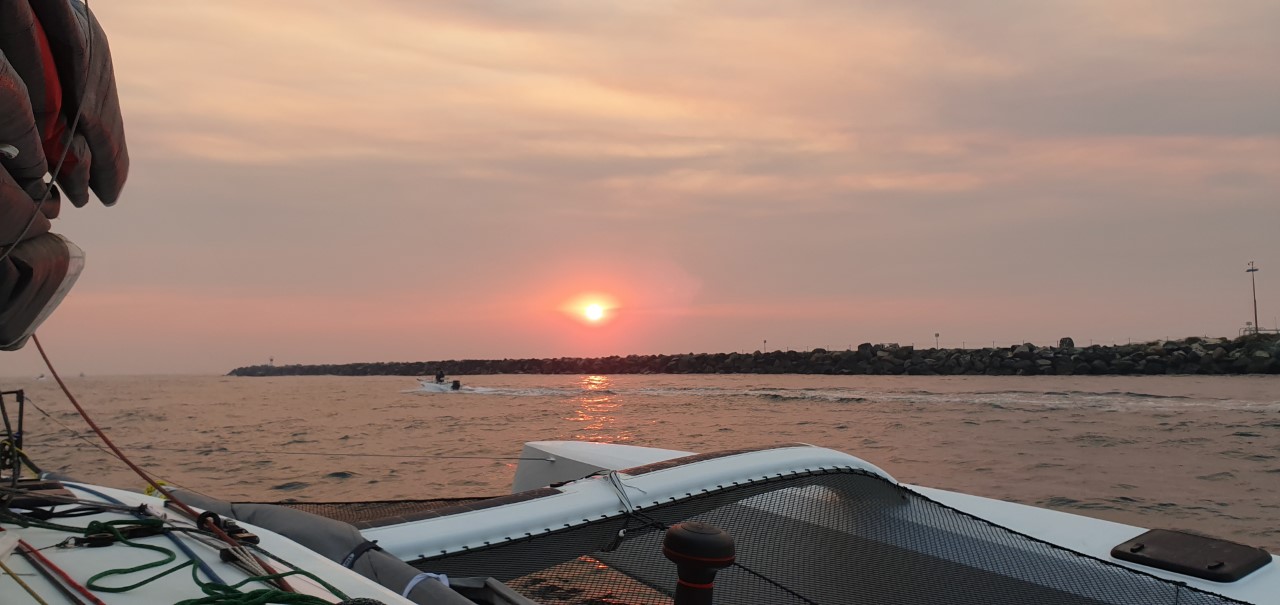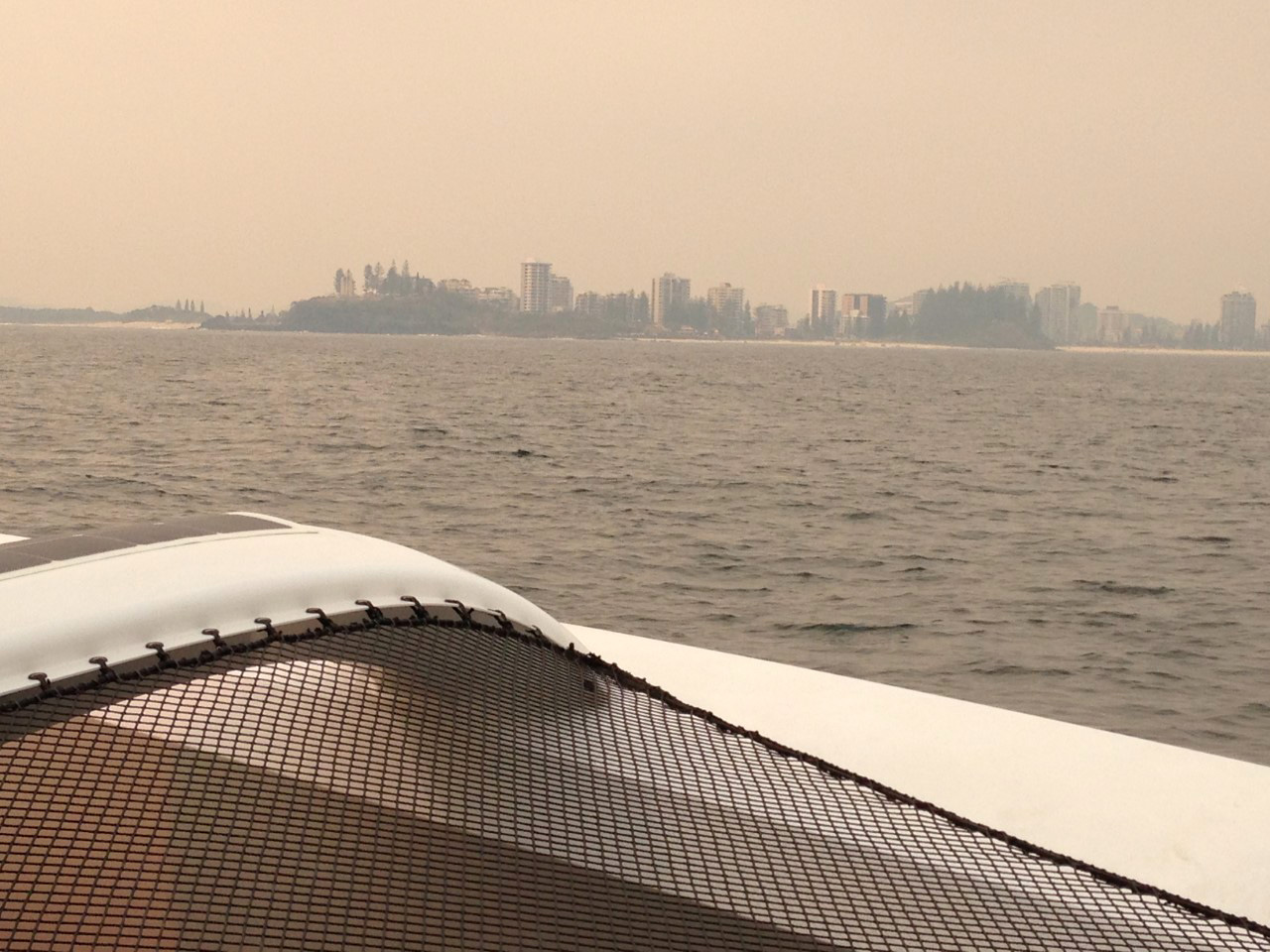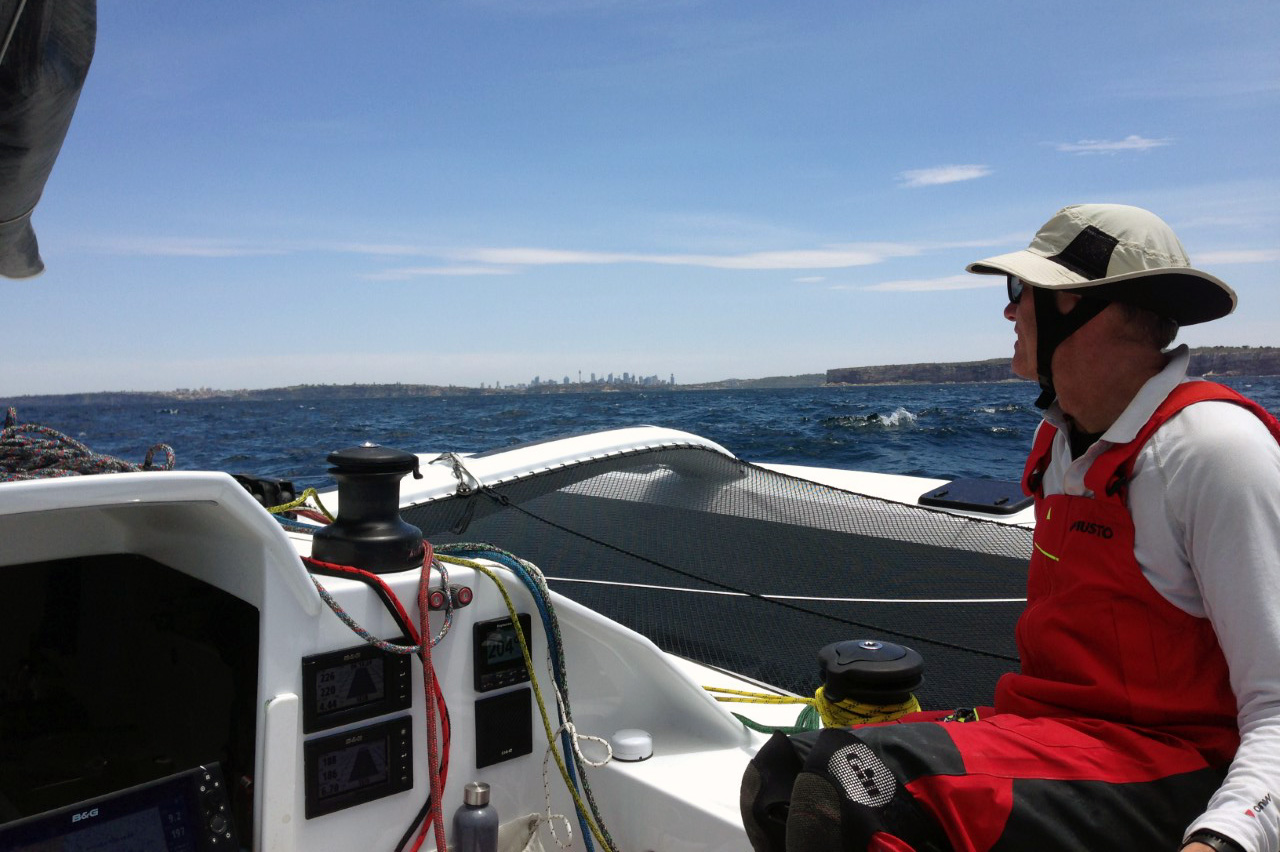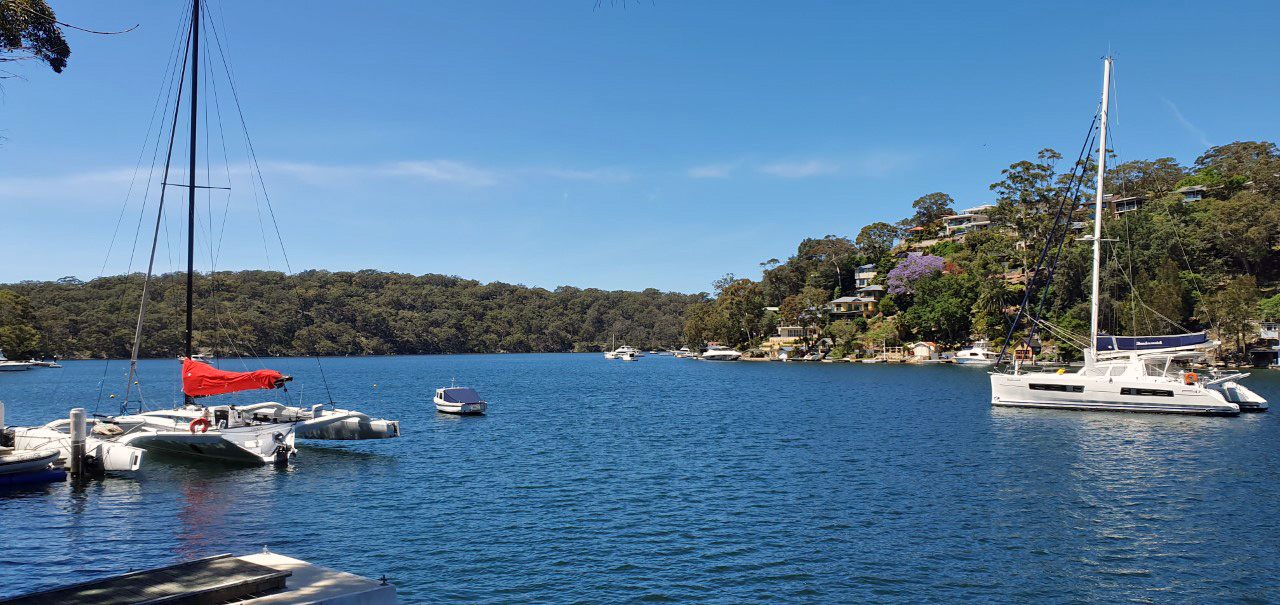After sorting out some of the teething problems associated with a new boat and enjoying the hospitality of the Southport Yacht Club, we started the first leg of the delivery in mid October. It is 1400NM between Southport and Adelaide, and the trip would be made more difficult by having to constantly sail towards the many approaching frontal systems present at this time of year.
Leg 1: Southport to Port Stephens
We crossed the bar early in the morning and headed south into a light souwesterly.

The smoke haze from the bushfires inland cleared transiently, but by Tweed Heads we were back into it again – where we would stay until close to Port Stephens.

Thankfully the breeze freshened a bit so we were able to make good time beating down the coast, but the smoke was heavy and ash was falling on the decks at times. There were many dead mutton birds in the water – perhaps the weaker ones overcome by smoke late on their migration South.
The southerly swell was up around 3m from the previous strong winds, making conditions during the evening a little unpleasant. The wind dropped out, forcing us to motor sail nearly all of the night.
By later the next morning, the smoke had cleared and the breeze shifted to the north and freshened. As a gale warning had been issued, we decided to head into Port Stephens instead of continuing to Port Hacking as planned.
Thankfully D’Albora Marina at Nelson Bay had a suitable berth that was relatively easy to get onto despite the increasingly fresh northerly winds.
Unfortunately there is no ULP at the marina, so a 800m trip up the main street to the nearest service station was needed to get more fuel. But at least we had 300NM under our belts without any problems.
Leg 2: Port Stephens to Port Hacking
The wind moderated overnight, and although a gale was forecast later in the day, we decided to head off before dawn to make the 90NM run to Port Hacking before the southerly front arrived in the afternoon. Things went mostly to plan, with the light northerly in the early morning strengthening and shifting westerly and the smoke clearing. We had made good time motor sailing then started to scoot along under sail as the breeze freshened. By Broken Bay, we were getting 25 knot gusts and by Port Jackson there were 30 knot bullets coming out the heads.

After dropping the heavy weather jib and putting in a 3rd reef, the boat was solid and handled the conditions well. We hugged the coast as we made our way past Port Botany then crossed Bate Bay making sure we kept West of Osborn Rocks that lie on the rhumb line, and entering Port Hacking in the early afternoon.
We then motored up the windy, and sometimes very shallow, channel leading up to our destination of Gymea Bay. We safely crossed under the power lines that run from Buraneer Point to Maianbar. The sign on the water states the clearance is only 9m, but the power line tower on the point is 30m high and it’s base is probably another 15-20m above the water – so our total fly height of 22.5m was not a problem.
Soon after, we had our first grounding – missing a turn in the channel that had developed over previous years and running into the new sand bank. It was a rookie error of navigation on my part – relying too much at the chart plotter rather than carefully looking at the water ahead and the channel markers. Thankfully our grounding was brief and we completed the last part up to Gymea Bay uneventfully. After tying up to the pylons and pontoon kindly lent to us we watched the front roll in later in the afternoon.
